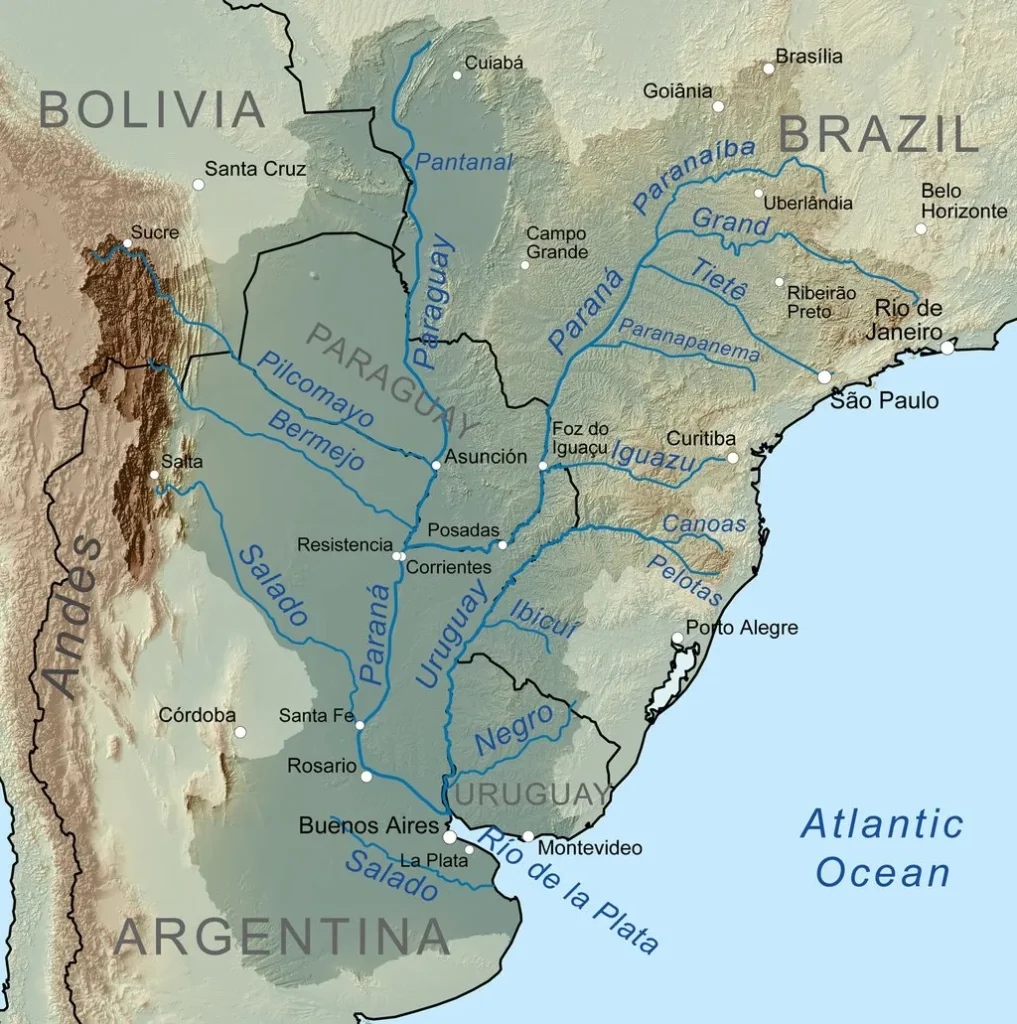Paraguay doesn’t shout for attention, but man, once you step into it, it pulls you in! Tucked in South America’s heart, it’s this crazy blend of Guaraní roots and Spanish colonial flair, alive, not some dusty exhibit. You’re walking through Asunción, and Guaraní’s buzzing as much as Spanish, while sopa paraguaya’s scent hits you from a family kitchen. Then there are folks sharing tereré from a gourd like it’s a handshake. This ain’t just a country, it’s a living tale of people mixing old and new, crafting traditions that feel proud, cozy, and unique. From music that grabs your soul to festivals that light up the night, it’s all about connection, family, history, and the land.

Quick Vibe Check
- Strengths: Guaraní’s deep roots keep it real; bilingual Spanish-Guaraní vibe is their badge; food and tunes are all about community.
- Standouts: Sopa paraguaya, ñandutí lace, that sweet Paraguayan harp, and epic San Juan parties.
- Hurdles: Rural spots cling tighter than cities; some old ways are slipping with modern push.
- Why It Clicks: This culture’s personal, every bite, dance, or yarn ties back to family, not just flash.
Guaraní: The Soul Beat
Start with the Guaraní, they’ve been here a thousand years before the Spanish crashed in during the 1500s. They grew manioc, corn, lived in tight crews, and spun stories that still linger. Most places wiped out indigenous vibes, but not here, 90% of Paraguayans chat in Guaraní alongside Spanish, making it a rare spot where it’s everyday life, not a relic. It’s more than talk; it shapes how they think, laugh, and tell tales. In places like Atyrá or Tobatí, you’ll catch Jopara, a Guaraní-Spanish mashup, flying in casual chats.
Their natural love shows up big. Take carrulim, caña, lemon, and ruda gulped on August 1 to shoo bad luck. It’s an old Guaraní trick, and vendors hawk it everywhere. Then there’s the storytelling, grandma’s passing down forest spirit myths or creation tales to kids. Not just bedtime fluff; it’s how they teach community and land respect, handed down like a family heirloom.
Spanish and Jesuit Mix
The Spanish hit in the 16th century, but they didn’t erase; they blended. Asunción’s fort, started in 1537, was where settlers and Guaraní women kicked off mestizo families, over 90% of folks today. The Jesuits juiced it up in the 17th and 18th centuries with 30 reductions, like little towns where Guaraní learned Christianity and crafts but kept their soul. Check Santísima Trinidad del Paraná, UNESCO’s got it as a World Heritage Site, with ruins that feel like a jungle Angkor Wat, all grand churches and plazas.
Jesuits didn’t just build, they gave Guaraní an alphabet, early books, and mixed European tunes with local flair, birthing the Paraguayan harp. That soft, soulful strum? Festival gold. Hit the Museum of Sacred Art in Asunción or the Mythical Museum Ramón Elías (12 miles south) for carvings with Christian twists or Jesuit statues still in use, history you can touch.
Food That Feels Like Home
Paraguayan grub’s like a grandma hug, warm, hearty, straight from the earth. Corn, manioc, and beef rule, thanks to Guaraní farms and Spanish cattle. Sopa paraguaya? Not soup, it’s a cheesy, onion-packed cornbread you can’t miss at Sunday family feasts. Chipa’s another gem, chewy cheese bread with manioc starch, sold by street vendors or baked for Holy Week. Mbejú’s a fried starch cake, and chipa guazú’s a corn soufflé, Guaraní-Spanish mashups everywhere.
Tereré’s the heart drink, cold yerba mate sipped through a bombilla from a gourd or guampa. It’s a social thing, passed around with laughs, sometimes with herbs for health. In Asunción parks or Chaco villages, it’s nonstop. Mate cocido or August’s carrulim are other hits. Meat’s huge, asado’s a weekend grill fest with stories flying. X posts shout about pira caldo (fish soup) or milanesa (breaded cutlet), though locro (corn stew) keeps the veggie side alive.
Music and Dance That Pull You In
The music? It hits deep. That Paraguayan harp’s the star, its rippling notes swinging from joyful to sad. Guarania, born in the 1920s by José Asunción Flores, is slow and emotional, love songs or land ballads. Paraguayan polka, from Czech immigrants in 1858, is fast and bouncy, perfect for party dances. Catch it all at festivals with harps, guitars, and accordions. Arpa Roga in Asunción’s got live harp sessions, worth it!
Dances are wild. Bottle dance? Women balance 10 bottles on their heads, graceful as heck, especially at San Juan. Gallopera’s a freeform group thing, bright skirts, flower braids, pitchers in hand. Mazurca criolla, a waltz twist, has a three-beat groove that’s mesmerizing. It’s not just moves, it’s community, with kids to gramps jumping in.
Festivals That Unite
Paraguayans party hard, and festivals mix faith, history, and fun. Independence Day (May 14-15) floods Asunción with red, white, and blue, parades, tunes, and street eats. San Juan (June 24) brings bonfires, coal-walking, and chipa galore. Virgin of Caacupé (December 8) pulls thousands for masses, showing off 89.6% Catholic roots. San Blas (February 3) blends faith and Guaraní with dances and music.
Ñoquis del 29’s a quirky monthly gig, gnocchi with money under plates for luck, thanks to Italians. Kamba Kua Afro-Paraguayans throw a drumming, costume-packed fest. These aren’t just parties, they’re how they stay tied to roots.
Crafts and Arts With Soul
Crafts rock, especially rural. Ñandutí lace, “spider web” in Guaraní, is delicate threadwork for tablecloths or dresses, crafted by Itauguá women over days. Ao po’í embroidery shines on rebozos. Areguá’s clay makes killer pots and tiles. Silver jewelry and baskets mix Guaraní and Spanish flair.
Literature’s quieter but rich. Guaraní oral tales of forest spirits live on, passed by word. Written stuff took off in the 1950s with José Ricardo Mazó and Augusto Roa Bastos blending Spanish and Guaraní. The Mythical Museum Ramón Elías shows the artifacts behind it.
Family and Social Glue
Family’s the core, not just parents and kids, but godparents, gramps, cousins, too. Godparents are picked for clout to shield kids if needed. Parents watch their daughters closely, and teens get tracked. Weekends mean asado or park trips; vacations are group deals. Rural roles stick, wives stay home, husbands work, but cities are shifting with younger pushback.
They’re warm but chill, close talk, eye contact, no bluntness. “Yes” might mean “maybe”, read the body! Tereré or square meals bond coworkers or Chaco farmers.
Tough Times, Tough Spirit
Struggles hit, 26% poverty (2018) and land inequality (85% farmland with 2.6% owners) hurt rural Guaraní spots. Healing traditions fade as kids urbanize or soybean farms take over. Stroessner’s 1954-1989 dictatorship stifled voices, but democracy’s brought it back.
Still, they’re tough. Guaraní’s a pride point, tying classes. Festivals, crafts, food hold firm. The War of the Triple Alliance (1865-1870), killing half, forged their grit, Asunción statues honor women and kids who rebuilt. That spirit’s still kicking.
Why You Gotta Feel It
Paraguay’s culture isn’t loud, but it’s deep, tereré with family, harp strums at fests, ñandutí stitches. It’s personal, Guaraní myths, Jesuit ruins, modern fights blend into something rare. Eat chipa at San Juan, roam Trinidad ruins, or join a Guaraní village, you’re not a tourist, you’re in the story. Hit Asunción markets or a fest, Paraguay pulls you in, not just shows off.

